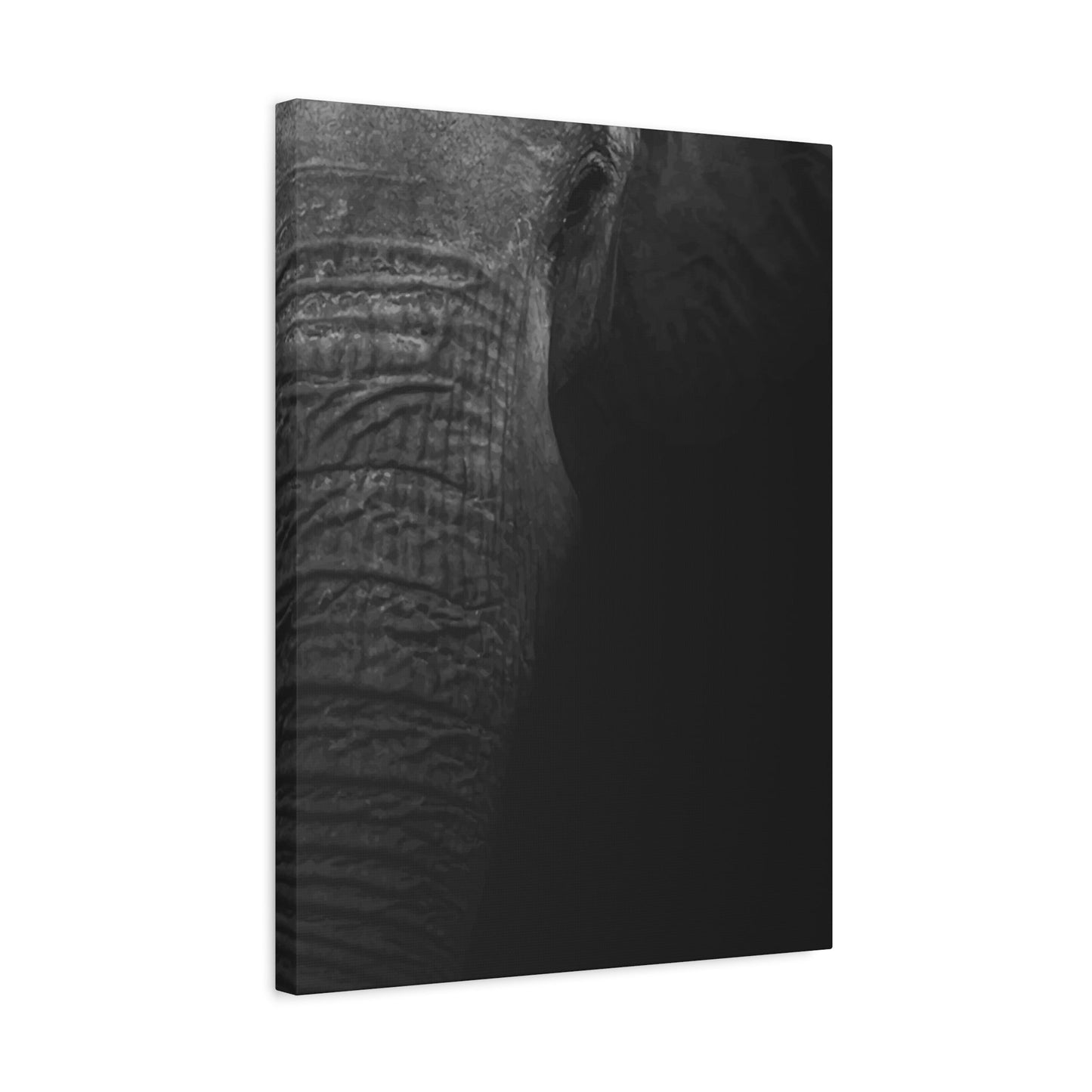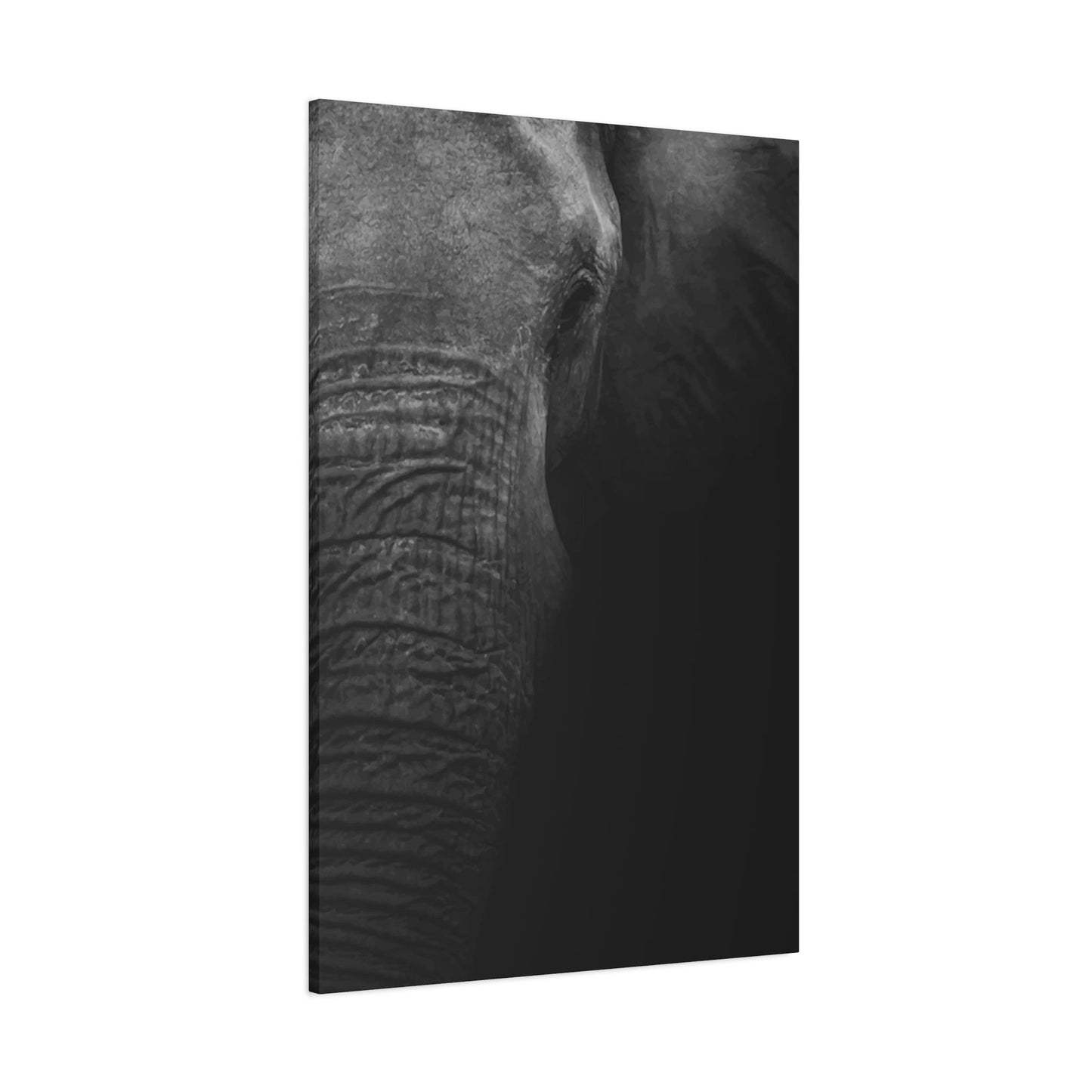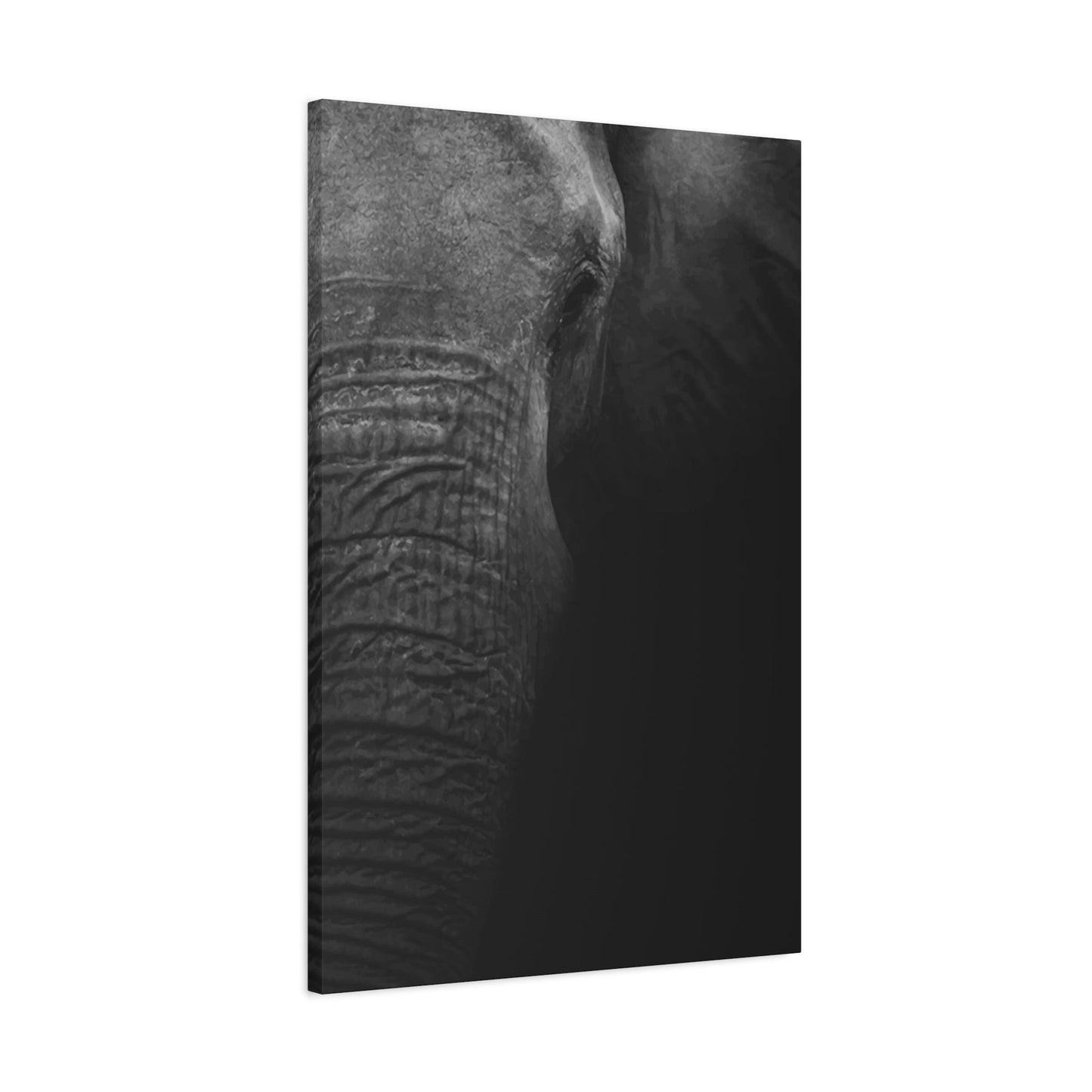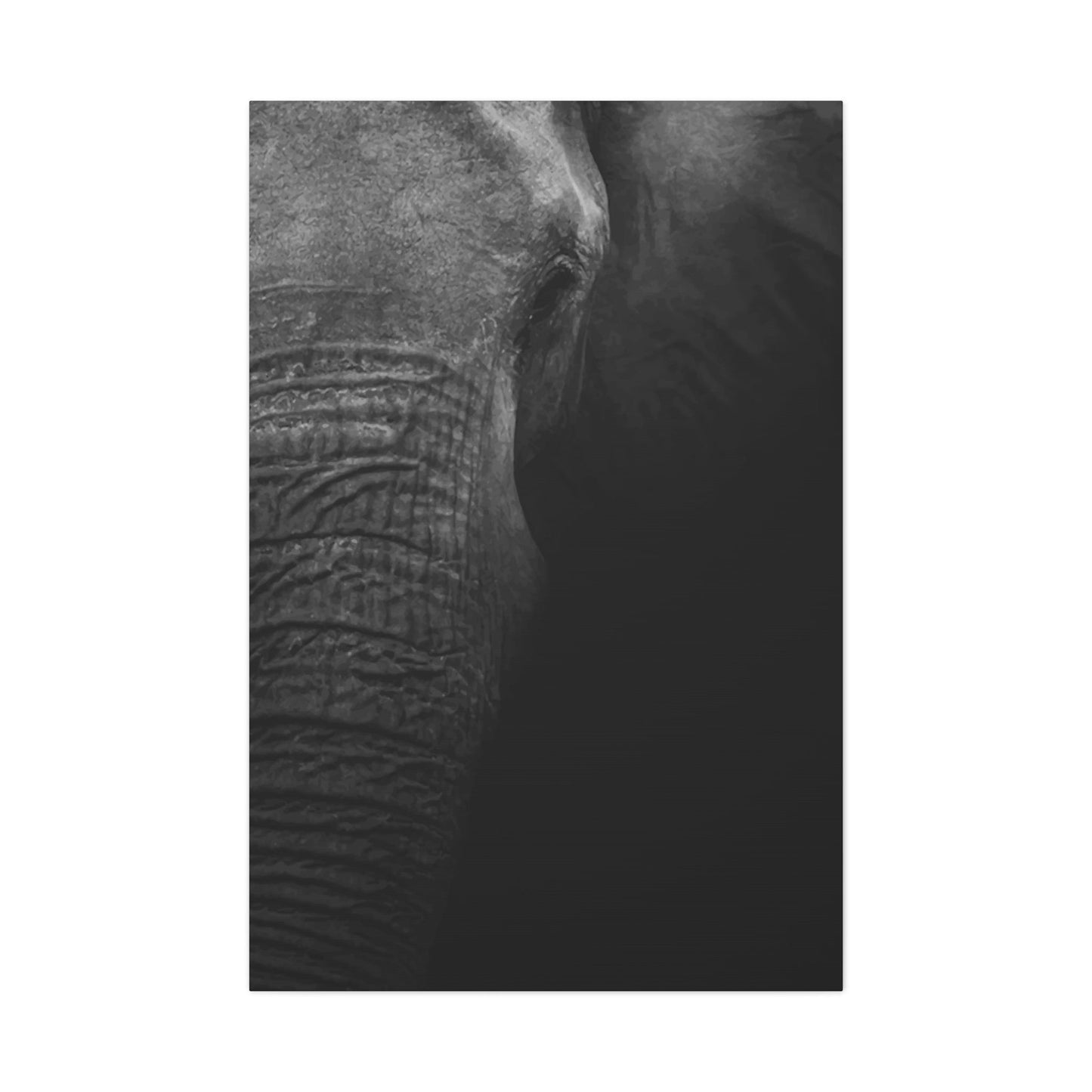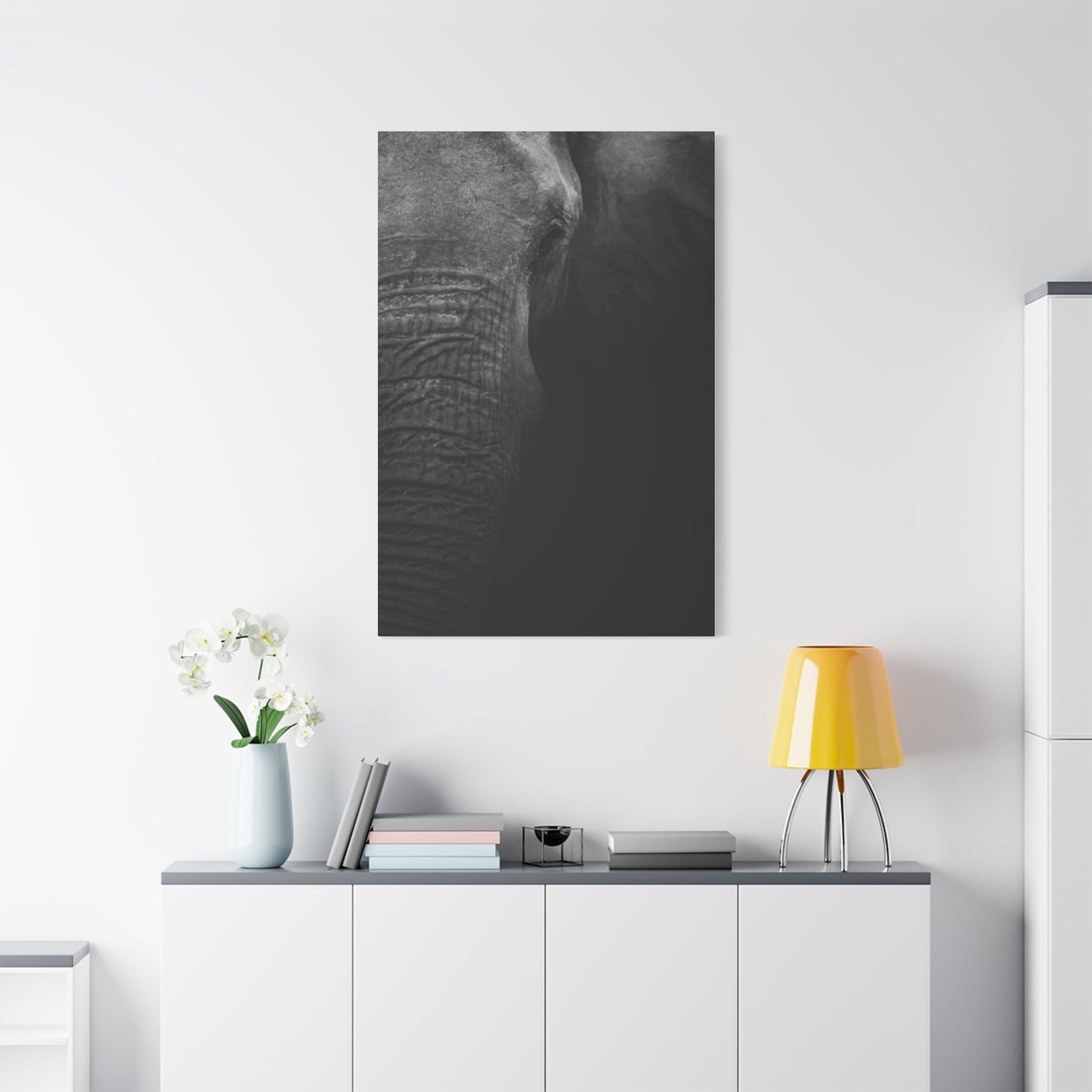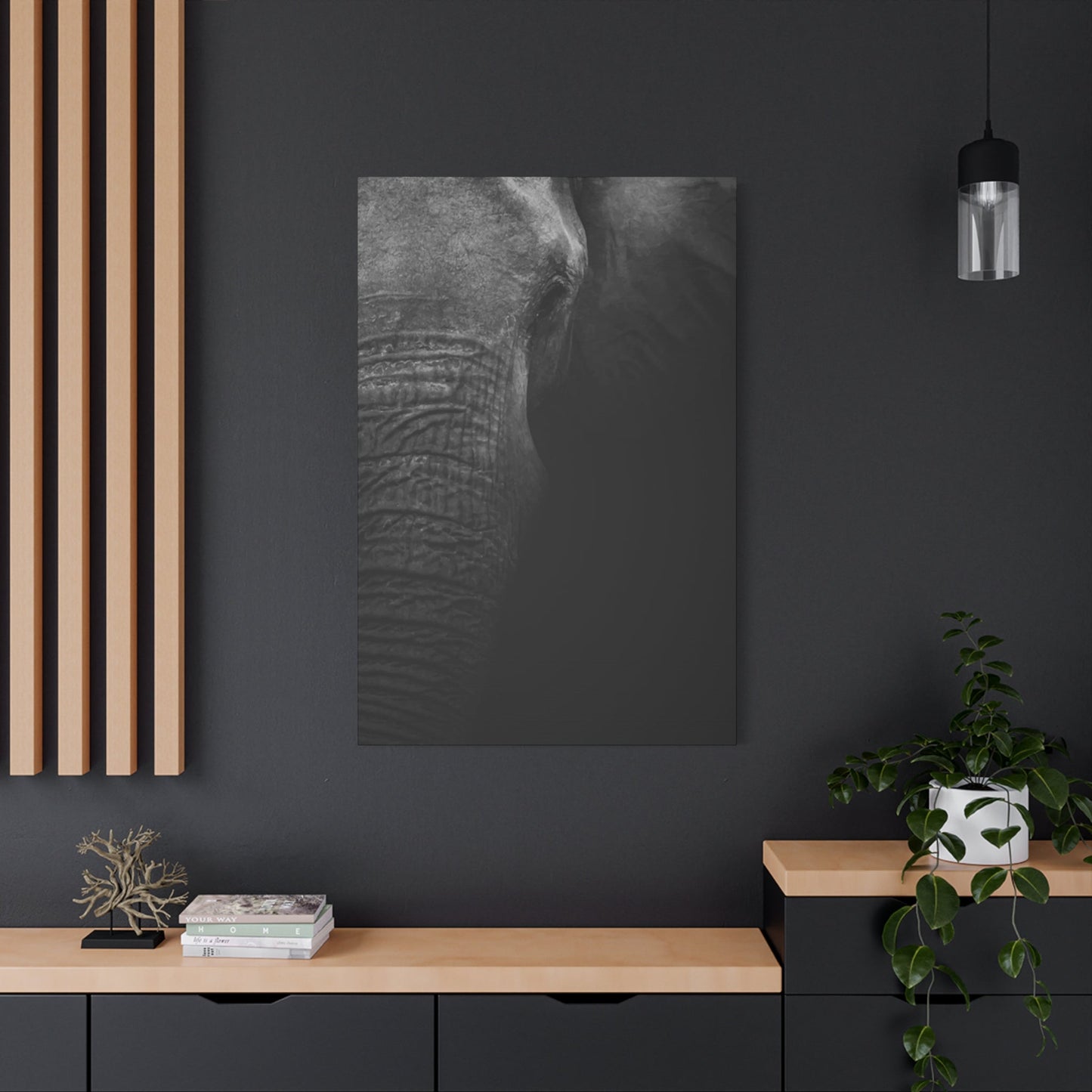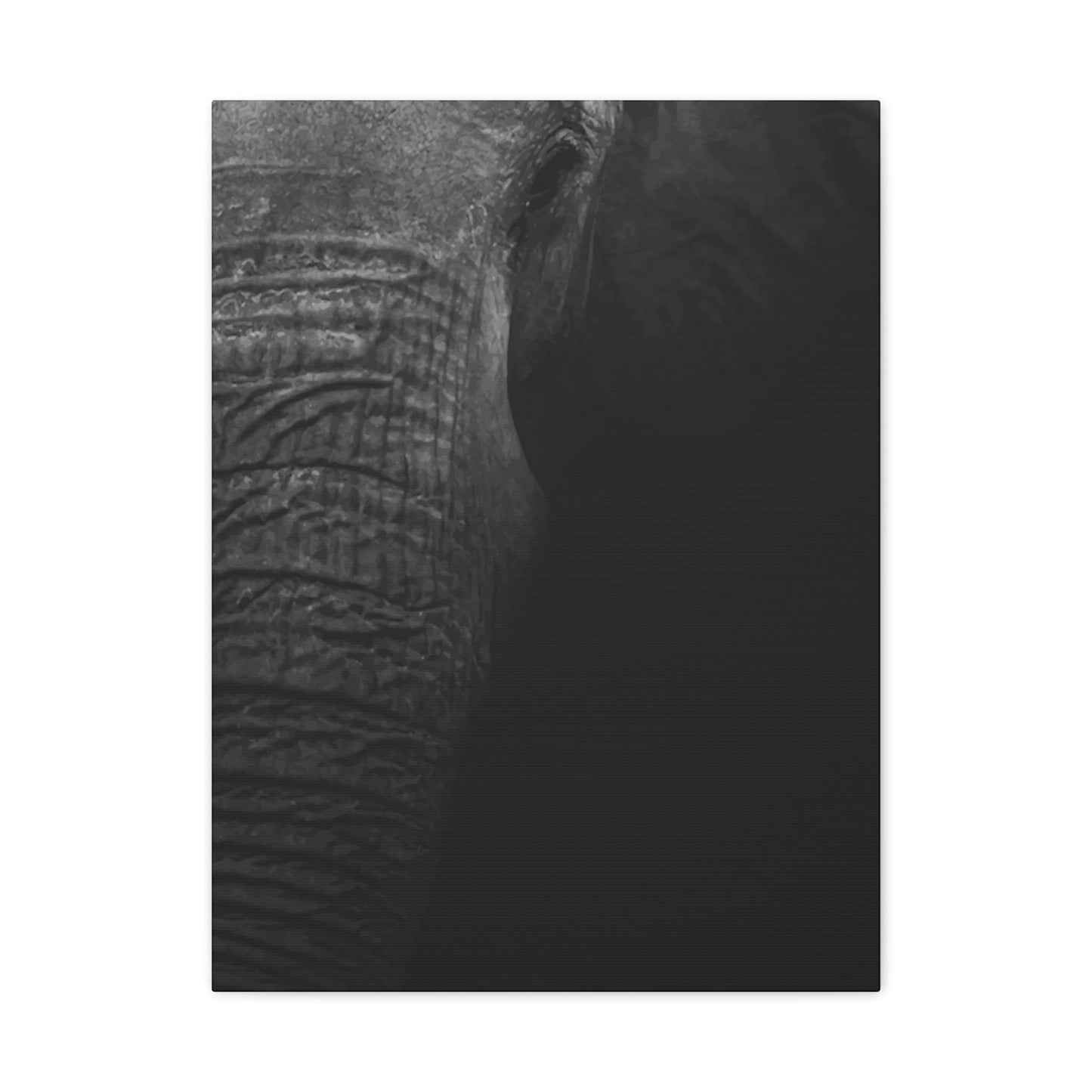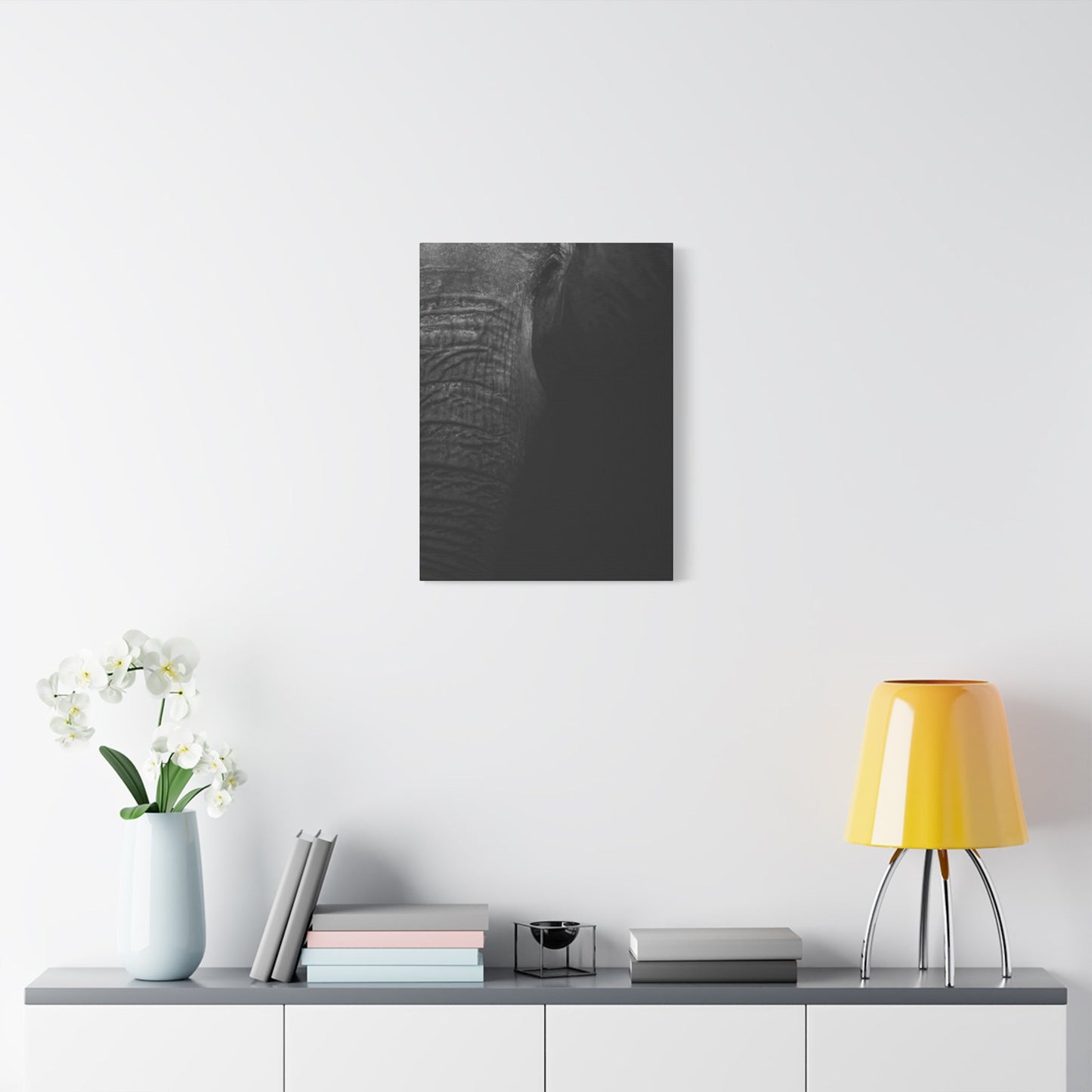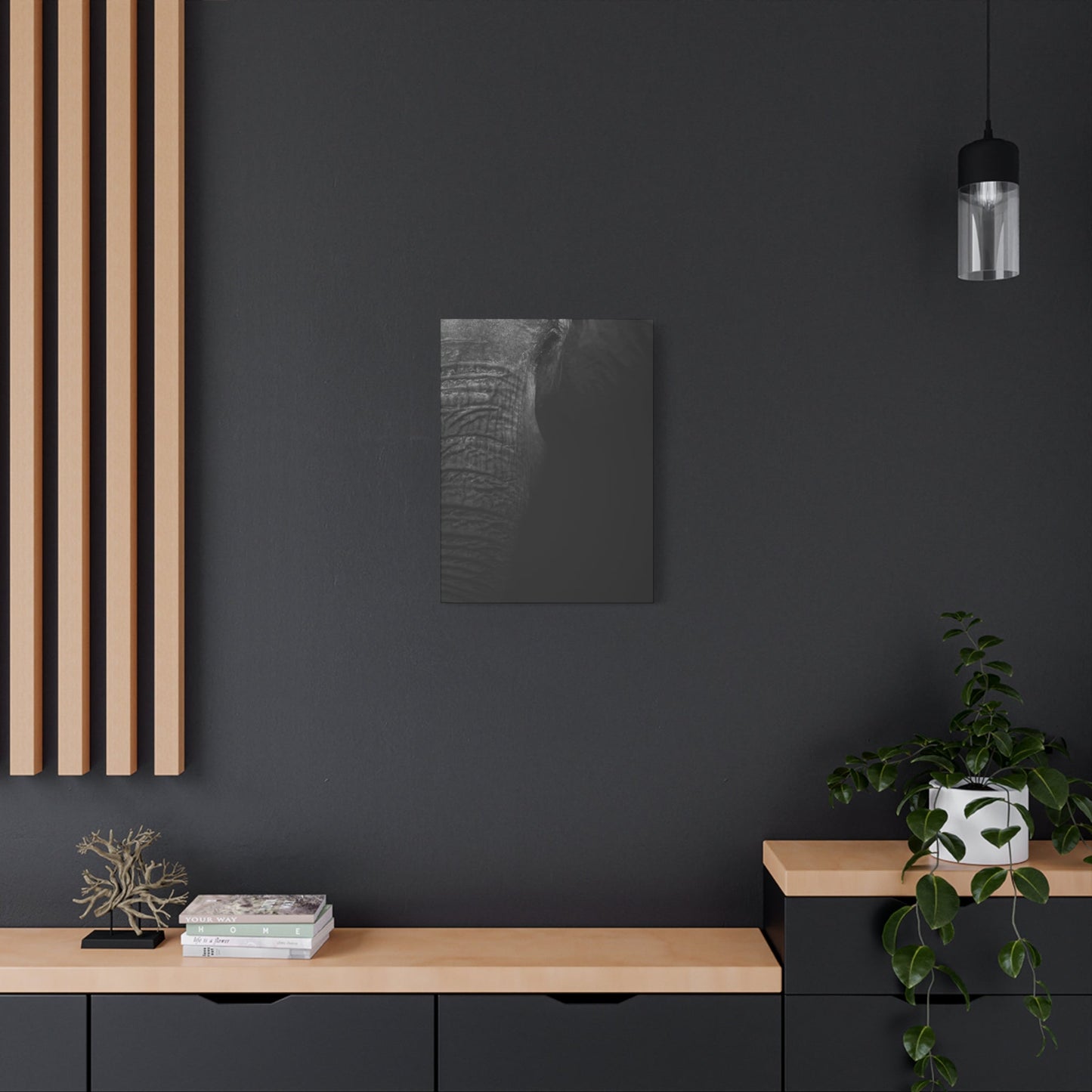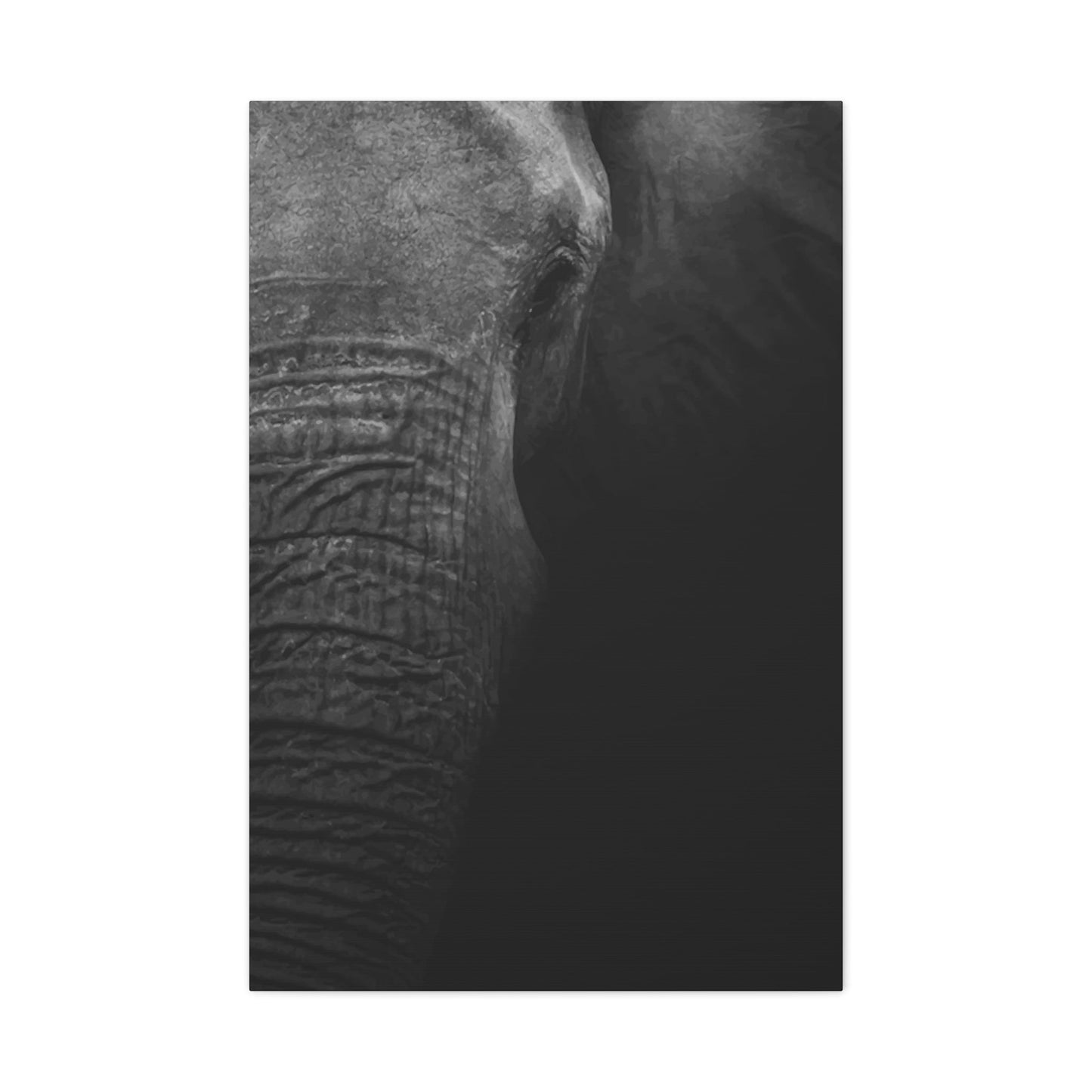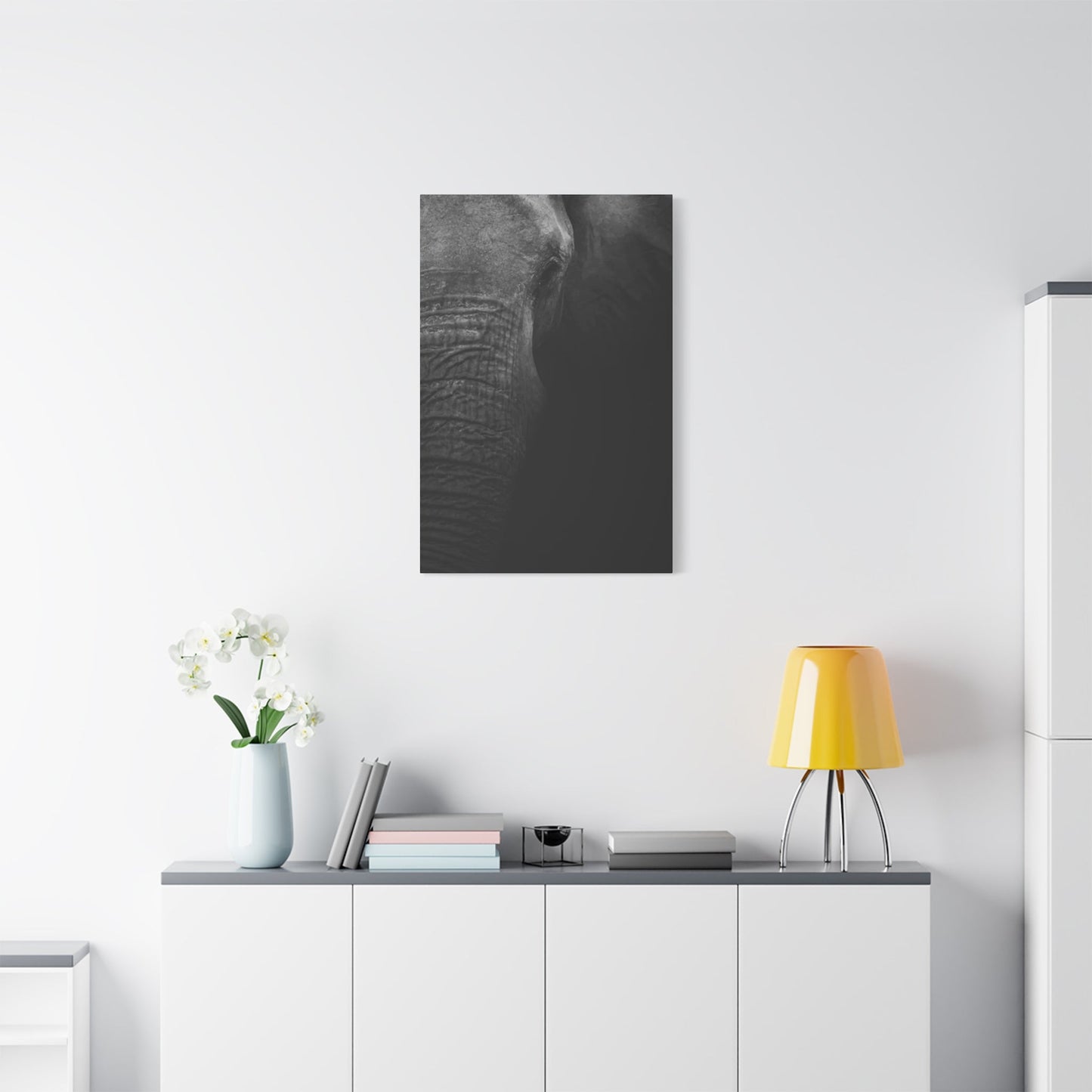Elephant Wall Art: The Spirit of the Wild at Home: A Comprehensive Exploration
In the heart of every human being lies an ancient connection to the natural world, a primal bond that civilization has never fully severed. This connection manifests itself in countless ways throughout our daily lives, from the houseplants that grace our windowsills to the nature documentaries that captivate our attention. Perhaps nowhere is this relationship more powerfully expressed than in our choice of art, particularly in the growing fascination with jungle king wall art that brings the majesty of the wild directly into our most intimate spaces.
The lion, universally recognized as the king of the jungle despite its savanna habitat, represents far more than mere biological classification. It embodies courage, strength, leadership, and an untamed spirit that resonates deeply with the human psyche. When we choose to display jungle king wall art in our homes, offices, or public spaces, we are making a profound statement about our values, aspirations, and connection to the natural world.
This comprehensive exploration delves into every aspect of jungle king wall art, from its historical roots and cultural significance to its practical applications in modern interior design. We will examine the psychological impact of such imagery, the various artistic styles and techniques employed by contemporary artists, and the growing market for wildlife-inspired home decor. More than simply decorative elements, these pieces serve as windows into our souls, reflecting our desire to maintain contact with the wild essence that urban living often suppresses.
The phenomenon of bringing wild animal imagery into domestic spaces is not new. Throughout history, humans have adorned their dwellings with representations of powerful animals, believing these images could transfer strength, protection, and good fortune to the inhabitants. What is new is the sophistication of contemporary jungle king wall art, the variety of mediums and styles available, and the conscious choice many people make to surround themselves with reminders of the natural world's majesty.
As we embark on this journey through the world of jungle king wall art, we will discover that these pieces are far more than simple decorations. They are statements of identity, sources of inspiration, conversation starters, and bridges between the civilized world and the untamed wilderness that continues to shape our collective unconscious. Whether rendered in photorealistic detail, stylized abstraction, or bold graphic design, the image of the lion serves as a powerful reminder of the strength and dignity that exists within both the natural world and ourselves.
The modern homeowner's relationship with jungle king wall art reflects broader cultural shifts toward environmental consciousness, biophilic design, and the recognition that our mental and emotional well-being is intrinsically linked to our connection with nature. As urban populations grow and direct contact with wildlife becomes increasingly rare, these artistic representations serve as vital links to the natural world, offering daily reminders of the beauty, power, and importance of wild spaces and the creatures that inhabit them.
In examining jungle king wall art, we also explore the intersection of art and conservation, where beautiful imagery serves not only aesthetic purposes but also educational and advocacy roles. Many contemporary artists working in this field are deeply committed to wildlife conservation, using their talents to raise awareness about endangered species and the importance of habitat preservation. Their work transforms private homes into galleries of environmental consciousness, where every glance at a magnificent lion portrait becomes a moment of reflection on our responsibility to protect the natural world.
The technical aspects of creating and displaying jungle king wall art have evolved dramatically with advances in printing technology, digital art creation, and new materials. Today's consumers can choose from an unprecedented array of options, from traditional oil paintings and watercolors to high-resolution digital prints, metal wall sculptures, and mixed-media installations. This diversity ensures that there is a jungle king artwork suitable for every aesthetic preference, budget, and space requirement.
As we delve deeper into this subject, we will explore how jungle king wall art functions within the broader context of interior design trends, examining how these powerful images can complement various decorating styles from minimalist modern to rustic traditional. We will also investigate the psychological and emotional benefits of living with such imagery, drawing on research in environmental psychology and biophilic design to understand why these representations of wild majesty have such a profound impact on our daily experience of home.
The cultural significance of lion imagery extends across continents and millennia, appearing in the art, literature, and mythology of civilizations from ancient Egypt and Greece to contemporary Africa and beyond. By choosing jungle king wall art, homeowners tap into this rich cultural heritage, surrounding themselves with symbols that have inspired humanity throughout history. This connection to our collective past adds layers of meaning to these contemporary artworks, transforming them from simple decorations into cultural artifacts that link us to our shared human story.
The journey through jungle king wall art is ultimately a journey into ourselves, exploring what it means to be human in an increasingly disconnected world and how we can use art to maintain our vital connection to the natural world that shaped our species. As we examine the various facets of this fascinating subject, we will discover that the choice to display such artwork is both deeply personal and universally significant, reflecting our individual tastes while connecting us to the broader human experience of wonder, respect, and kinship with the magnificent creatures that share our planet.
The Evolution of Wildlife Art:
The representation of animals in art predates written history, stretching back to humanity's earliest creative expressions. Long before the first jungle king wall art graced a modern living room, our ancestors were painting lions, bison, horses, and other creatures on cave walls, establishing a tradition that continues to evolve and inspire today. Understanding this rich heritage provides essential context for appreciating the contemporary jungle king art movement and its place in the broader continuum of human artistic expression.
The earliest known examples of animal art date back approximately 40,000 years, found in caves across Europe, Africa, and Asia. These Paleolithic artists demonstrated remarkable skill and observation, capturing not only the physical appearance of animals but also their movement, behavior, and essential character. The famous cave paintings at Lascaux, Chauvet, and Altamira reveal sophisticated understanding of animal anatomy and behavior, suggesting that our ancestors' relationship with wildlife was both intimate and profound.
Lions, in particular, held special significance in early human art. Cave paintings from various regions show these magnificent predators in hunting scenes, ceremonial contexts, and as symbols of power and divine connection. The lion's prominence in early art reflects its dual role as both fearsome adversary and respected neighbor, embodying qualities that humans both feared and admired. This ancient fascination with lion imagery laid the groundwork for the contemporary jungle king wall art phenomenon, demonstrating that our attraction to these powerful creatures spans millennia.
As civilizations developed, animal representation evolved from cave walls to more sophisticated mediums and contexts. Ancient Egyptian art prominently featured lions in religious and royal contexts, with the sphinx serving as perhaps the most famous fusion of human and lion imagery. Egyptian artists developed highly stylized conventions for depicting lions, emphasizing their regal bearing and divine associations. These artistic traditions influenced subsequent civilizations throughout the Mediterranean and beyond, establishing lions as universal symbols of royalty, divinity, and power.
Cave Paintings to Contemporary Expressions
Greek and Roman art continued this tradition, incorporating lions into sculptures, mosaics, and frescoes that adorned public buildings and private homes. The Romans' fascination with exotic animals, including lions from Africa, led to increasingly detailed and naturalistic representations. Roman artists studied live lions in amphitheaters and private collections, allowing them to create more accurate and dynamic portrayals than their predecessors. This attention to naturalistic detail marked a significant evolution in animal art, moving beyond symbolic representation toward more realistic depiction.
The medieval period saw animal imagery take on new meanings within Christian contexts, with lions representing both Christ (the Lion of Judah) and the devil, depending on the artistic and theological context. Medieval bestiaries combined natural observation with moral and religious instruction, creating a rich tradition of animal symbolism that influenced European art for centuries. During this period, lion imagery became deeply embedded in heraldic traditions, with countless noble families adopting lions as symbols of courage, nobility, and divine favor.
The Renaissance brought unprecedented realism to animal art, as artists like Leonardo da Vinci and Albrecht Dürer made detailed studies of animal anatomy and behavior. Da Vinci's anatomical drawings of lions and other animals demonstrate scientific precision combined with artistic sensitivity, establishing new standards for accuracy in animal representation. This period marked the beginning of art's role in natural history documentation, with artists serving as both creative interpreters and scientific observers of the animal kingdom.
The Age of Exploration expanded European awareness of exotic animals, leading to increased demand for accurate depictions of lions and other African wildlife. Artists accompanied explorers and naturalists on expeditions, creating field sketches and detailed studies that would later be developed into formal artworks. This period saw the emergence of specialized wildlife artists who dedicated their careers to animal subjects, establishing a tradition that continues today in contemporary jungle king wall art.
The 18th and 19th centuries witnessed the golden age of wildlife art, with artists like George Stubbs, Rosa Bonheur, and Edwin Landseer achieving fame and fortune through their animal subjects. Stubbs's anatomical precision revolutionized equine art, while Bonheur's powerful depictions of wild animals challenged gender conventions and established new standards for wildlife representation. Landseer's romantic interpretations of animals, including his famous lions in Trafalgar Square, demonstrated how wildlife art could serve both decorative and monumental purposes.
The development of photography in the 19th century profoundly impacted wildlife art, providing artists with new tools for studying animal movement and behavior. Eadweard Muybridge's sequential photographs of animals in motion revealed details invisible to the naked eye, enabling artists to create more accurate and dynamic representations. This technological advancement laid the groundwork for the photorealistic jungle king wall art that is popular today, where artists can achieve unprecedented accuracy in capturing the essence of their subjects.
The 20th century brought radical changes to animal art, as modernist movements challenged traditional representation. Artists like Franz Marc and Paul Klee explored abstract and expressionist approaches to animal subjects, while others incorporated wildlife imagery into surrealist and cubist compositions. These experimental approaches expanded the possibilities for animal art, moving beyond naturalistic representation to explore deeper psychological and spiritual connections between humans and animals.
Post-World War II prosperity led to increased interest in home decoration and the democratization of art ownership. Wildlife prints and reproductions became widely available, bringing animal imagery into middle-class homes for the first time. This period saw the emergence of commercial wildlife art as a distinct market category, with specialized publishers producing high-quality prints of animal subjects for home decoration.
The environmental movement of the 1960s and 1970s gave new urgency to wildlife art, as artists increasingly saw their work as serving conservation purposes. Artists like Robert Bateman and Carl Brenders achieved international recognition for their hyperrealistic wildlife paintings that combined artistic excellence with environmental advocacy. This conservation-minded approach continues to influence contemporary jungle king wall art, where many artists explicitly link their work to wildlife protection efforts.
The digital revolution of the late 20th and early 21st centuries transformed wildlife art creation and distribution. Digital painting tools enabled artists to achieve new levels of detail and experiment with techniques impossible in traditional media. Online galleries and print-on-demand services democratized access to original wildlife art, allowing consumers to discover and purchase jungle king wall art from artists around the world.
Contemporary jungle king wall art represents the culmination of this long evolutionary process, incorporating elements from across art history while responding to current aesthetic preferences and technological capabilities. Today's artists draw inspiration from cave paintings, Egyptian hieroglyphs, Renaissance studies, and modern photography, creating works that honor tradition while embracing innovation. The result is an incredibly diverse field that offers something for every taste and budget, from photorealistic portraits to abstract interpretations.
The evolution of wildlife art also reflects changing human relationships with the natural world. Early cave painters lived intimately with wild animals, while contemporary artists often work from photographs and zoo observations. This distance has paradoxically intensified our romantic attachment to wildlife, with jungle king wall art serving as a bridge between urban living and wild nature. The idealization of lions and other wildlife in contemporary art reflects both nostalgia for a more connected past and hope for a more sustainable future.
Modern jungle king wall art also benefits from unprecedented access to high-quality wildlife photography and videography. Artists can study lion behavior in detail through nature documentaries and online resources, enabling them to create works that capture not only physical appearance but also behavioral nuances and emotional expressions. This wealth of reference material has contributed to the remarkable sophistication of contemporary wildlife art.
The global nature of today's art market means that jungle king wall art draws influences from around the world. African artists bring authentic cultural perspectives to lion imagery, while Western artists may emphasize conservation messages or romantic idealization. Asian artists contribute unique aesthetic approaches influenced by traditional animal art in their cultures. This cross-cultural pollination enriches the field and ensures that jungle king wall art continues to evolve and diversify.
Educational institutions have also played a crucial role in the evolution of wildlife art, with specialized programs training artists in natural history illustration and wildlife art techniques. These programs ensure that traditional skills are preserved and passed on while encouraging innovation and experimentation. Many contemporary jungle king wall artists are graduates of these programs, bringing both technical expertise and fresh perspectives to their work.
The future of wildlife art promises continued evolution as new technologies emerge and cultural attitudes toward nature continue to develop. Virtual reality, augmented reality, and artificial intelligence are already beginning to influence how artists create and viewers experience wildlife art. The fundamental human fascination with powerful animals like lions ensures that jungle king wall art will continue to find audiences and inspire artists for generations to come.
This rich evolutionary history provides essential context for understanding and appreciating contemporary jungle king wall art. Each piece carries within it echoes of ancient cave paintings, medieval symbolism, Renaissance naturalism, and modern conservation consciousness. By choosing to display such artwork in our homes, we participate in humanity's longest continuous artistic tradition, connecting ourselves to countless generations of artists and art lovers who have found inspiration and meaning in the representation of wild animals.
Jungle King Imagery:
The image of the lion as the "King of the Jungle" represents one of the most powerful and enduring symbols in human culture, transcending geographical, cultural, and temporal boundaries to speak to something fundamental in the human psyche. Understanding the rich symbolism and multilayered meanings embedded in jungle king imagery provides crucial insight into why these representations hold such compelling appeal in contemporary wall art and interior design.
The designation of the lion as "King of the Jungle" itself reveals the symbolic rather than literal nature of our relationship with this magnificent predator. Lions actually inhabit savannas, grasslands, and sparse woodlands rather than dense jungles, yet the phrase has become so deeply embedded in popular consciousness that factual accuracy has yielded to poetic truth. This linguistic transformation reflects our tendency to mythologize and elevate the lion beyond its biological reality into the realm of archetypal symbolism.
At its most fundamental level, the lion symbolizes raw power and natural authority. Unlike human-derived power, which depends on social structures, technology, or inherited position, the lion's dominance stems from inherent physical capabilities and instinctual mastery of its environment. This distinction makes the lion an appealing symbol for those seeking to connect with authentic, uncompromised strength. In jungle king wall art, viewers often project their aspirations for genuine personal power and self-mastery onto the dignified bearing and confident presence of the depicted lion.
The mane of the male lion carries particular symbolic significance, serving as both a crown and a badge of maturity, virility, and dominance. In artistic representations, the mane becomes a focal point that artists can emphasize or stylize to convey different aspects of the lion's symbolic meaning. A flowing, well-developed mane suggests peak power and confidence, while a more modest mane might indicate youth or a more approachable majesty. The way artists render the mane in jungle king wall art often determines the emotional impact and symbolic message of the piece.
Leadership represents another core symbolic element of jungle king imagery. Lions live in social groups called prides, and the dominant male bears responsibility for protecting the pride and maintaining social order. This natural leadership role has made the lion a powerful symbol for human leadership qualities, particularly the kind of protective, responsible leadership that serves the group rather than merely commanding it. Business leaders, military officers, and political figures often gravitate toward lion imagery as a representation of their aspirational leadership qualities.
The lion's courage is legendary, embedded in countless cultural expressions from "brave as a lion" to the Cowardly Lion's journey in "The Wizard of Oz." This courage symbolism operates on multiple levels in jungle king wall art. Physical courage is the most obvious association, but the lion also represents moral courage, the strength to stand by one's convictions, and the bravery to face life's challenges with dignity and determination. For many viewers, displaying lion imagery serves as a daily reminder to approach difficulties with lion-like courage.
Dignity and noble bearing are essential elements of lion symbolism that translate beautifully into visual art. The lion's natural posture, facial expressions, and movement patterns convey inherent nobility that artists can emphasize through composition, lighting, and stylistic choices. In jungle king wall art, this dignity serves as an aspirational quality, reminding viewers to carry themselves with similar self-respect and poise regardless of external circumstances.
The protective aspect of lion symbolism resonates particularly strongly in home environments. Lions are fierce defenders of their territory and pride members, qualities that translate symbolically into protection of home, family, and personal values. Many people choose jungle king wall art specifically for its protective symbolism, believing that the presence of this powerful imagery creates a sense of security and guardianship over their domestic space.
Royal and regal associations form another significant layer of lion symbolism. Throughout history, lions have been associated with royalty, appearing on coats of arms, royal crests, and heraldic devices worldwide. The phrase "lion-hearted" specifically referred to royal courage, most famously associated with Richard the Lionheart. In contemporary jungle king wall art, these royal associations allow ordinary individuals to surround themselves with symbols of nobility and elevated status, regardless of their actual social position.
Symbolism and Meaning
The spiritual dimensions of lion symbolism add depth and complexity to jungle king imagery. In many religious and spiritual traditions, lions represent divine power, spiritual strength, and connection to higher realms of existence. The Lion of Judah in Judeo-Christian tradition, the lion-headed deities of ancient Egypt, and the lion symbols in Hindu and Buddhist iconography all contribute to the spiritual resonance of contemporary lion art. For spiritually minded individuals, jungle king wall art can serve as a form of sacred imagery that supports meditation, prayer, and spiritual reflection.
Freedom represents another powerful symbolic association with lions, despite the fact that many people's primary exposure to these animals comes through zoos and wildlife parks. The lion embodies the concept of living according to one's true nature, uncompromised by social expectations or artificial constraints. In an increasingly regulated and structured world, jungle king imagery offers viewers a symbolic connection to unfettered existence and authentic self-expression.
The cyclical nature of life and death is also embedded in lion symbolism, as these apex predators play crucial roles in ecosystem balance. The lion represents both life force and the natural order that includes death as a necessary component. This deeper symbolic layer adds gravitas to jungle king wall art, making it suitable for contemplative spaces where viewers might reflect on life's bigger questions and their place in the natural order.
Gender dynamics in lion symbolism are complex and often reflect cultural attitudes toward masculinity and femininity. Male lions with their prominent manes typically symbolize masculine power, while lionesses represent feminine strength, nurturing protection, and collaborative hunting efficiency. Contemporary jungle king wall art often explores these gender dynamics, with some pieces emphasizing traditional masculine lion imagery while others celebrate the strength and capability of lionesses or the partnership dynamics within the pride.
The predator-prey relationship embodied in lion imagery speaks to fundamental survival instincts and competitive dynamics that remain relevant in modern life. While few contemporary viewers face physical predation, the symbolic representation of being an apex predator resonates with business competition, career advancement, and personal achievement. Jungle king wall art in office settings often draws on this predatory symbolism to inspire aggressive pursuit of goals and competitive advantage.
Solitude and independence form another important symbolic dimension, as lions, despite their social nature, often hunt alone and maintain individual territories. This aspect of lion symbolism appeals particularly to introverts and independent-minded individuals who value self-reliance and personal autonomy. In jungle king wall art, the solitary lion can represent the strength found in solitude and the power of individual determination.
The wild versus civilized tension inherent in lion imagery creates powerful symbolic resonance in domestic settings. Bringing a symbol of ultimate wildness into carefully controlled home environments creates productive tension between order and chaos, civilization and nature, safety and danger. This tension can be energizing and inspiring, reminding viewers of the wild aspects of their own nature that civilized living tends to suppress.
Color symbolism plays a crucial role in how lion imagery conveys meaning. The golden tones traditionally associated with lions connect to solar symbolism, divine light, and illumination. Black lions or darker renditions might emphasize mystery, power, and connection to earth or night energies. White lions carry associations with purity, spiritual elevation, and rare nobility. Artists working in jungle king wall art carefully consider color choices to align with the symbolic messages they wish to convey.
Environmental symbolism has become increasingly important in contemporary lion imagery, as these magnificent predators face habitat loss and population decline. Modern jungle king wall art often carries implicit or explicit conservation messages, with the lion serving as a symbol for endangered wilderness and the urgent need for environmental protection. This adds contemporary relevance and moral weight to traditional lion symbolism.
The artistic treatment of lion imagery significantly affects its symbolic impact. Photorealistic representations emphasize the lion's natural majesty and biological reality, while stylized or abstract treatments can highlight specific symbolic qualities. Some artists emphasize the lion's eyes to convey wisdom and spiritual depth, while others focus on the powerful body structure to emphasize strength and capability.
Cultural variations in lion symbolism enrich the meaning available in jungle king wall art. African traditions often emphasize the lion's role as a bridge between human and spiritual realms, while European heraldic traditions stress nobility and honor. Asian interpretations might focus on the lion's protective qualities or its role in Buddhist iconography. Contemporary artists can draw from this rich multicultural symbolic heritage to create works that resonate with diverse audiences.
The seasonal and temporal aspects of lion symbolism relate to solar cycles, with lions often associated with summer, midday, and the prime of life. However, the eternal nature of symbolic lions means they can also represent timelessness and connection to archetypal energies that transcend temporal limitations. This temporal flexibility allows jungle king wall art to fit appropriately in various contexts and serve different symbolic functions.
Personal symbolic interpretation remains perhaps the most important aspect of jungle king imagery. While cultural and historical associations provide a foundation for understanding, individual viewers bring their own experiences, aspirations, and psychological needs to their interpretation of lion art. The most effective jungle king wall art works on multiple symbolic levels, offering viewers rich opportunities for personal meaning-making while honoring the broader cultural heritage of lion symbolism.
The therapeutic dimensions of lion symbolism should not be overlooked. Many people find strength, comfort, and inspiration in lion imagery during difficult periods of their lives. The lion's symbolic associations with courage, strength, and resilience can provide psychological support and remind viewers of their own inner resources. In this context, jungle king wall art functions as more than decoration, serving as a form of visual therapy and spiritual support.
Understanding these multiple layers of symbolism and meaning enriches appreciation of jungle king wall art while helping viewers choose pieces that resonate with their personal values, aspirations, and aesthetic preferences. The enduring appeal of lion imagery stems from its ability to operate simultaneously on literal, cultural, spiritual, and personal levels, offering viewers a rich symbolic vocabulary for expressing and exploring their relationship with power, nature, and their own authentic selves.
Wildlife Art in Interior Design
The inclusion of wildlife art, particularly jungle king imagery, in interior spaces operates on profound psychological levels that extend far beyond mere aesthetic preference. The human mind's response to animal imagery in domestic environments reflects deep-seated evolutionary, cultural, and personal psychological mechanisms that influence mood, behavior, and overall well-being in ways that are both subtle and significant.
At the foundation of our psychological response to wildlife art lies the concept of biophilia, first articulated by renowned biologist E.O. Wilson. Biophilia suggests that humans possess an innate affinity for other living systems, developed through millions of years of evolution during which our survival depended on close observation and understanding of natural environments. This biological predisposition creates a fundamental psychological comfort and satisfaction when surrounded by representations of nature, even when those representations are artistic rather than literal.
In the context of interior design, jungle king wall art serves as a bridge between our evolved need for natural connection and the realities of contemporary urban living. The presence of powerful animal imagery can trigger subconscious associations with strength, security, and natural harmony that have psychological benefits for inhabitants. Research in environmental psychology consistently demonstrates that natural imagery, including wildlife art, can reduce stress hormones, lower blood pressure, and improve overall mood compared to environments lacking such connections to nature.
The specific psychological impact of predator imagery, such as lions, creates unique dynamics in interior spaces. Unlike gentle nature scenes or prey animals, predator art introduces elements of power and potential danger that can be psychologically stimulating rather than merely calming. This controlled exposure to symbolic danger in a safe environment can be invigorating, creating a sense of excitement and vitality that energizes inhabitants while maintaining the security of domestic space.
From a territoriality perspective, displaying jungle king wall art can satisfy deep psychological needs related to domain marking and space claiming. The lion's role as a territorial animal resonates with human territorial instincts, and displaying powerful animal imagery can psychologically reinforce the inhabitant's sense of ownership and control over their environment. This territorial reinforcement can contribute to feelings of security, confidence, and personal empowerment within the home space.
The aspirational psychology associated with lion imagery plays a significant role in its effectiveness as interior design. When individuals surround themselves with representations of qualities they admire or seek to develop, these images can serve as constant visual reminders and motivational cues. The lion's symbolic associations with courage, leadership, and strength provide daily reinforcement for personal development goals and self-improvement efforts.
Social psychology research indicates that environmental cues significantly influence self-perception and behavior. Individuals in environments featuring powerful, noble imagery often report feeling more confident and capable, while also behaving in ways that align with the environmental messaging. This psychological phenomenon, known as embodied cognition, suggests that jungle king wall art can actually influence inhabitant behavior in positive directions related to confidence and leadership.
The scale and presence of animal imagery in interior spaces create important psychological effects related to spatial perception and emotional response. Large-scale jungle king art can make inhabitants feel more significant and empowered, while smaller pieces might serve as intimate sources of inspiration and comfort. The psychological impact of scale relates to concepts of dominance and submission, with appropriately sized wildlife art helping inhabitants feel psychologically balanced within their environment.
Color psychology intersects powerfully with wildlife art psychology, as the warm golds, rich browns, and deep earth tones commonly associated with lion imagery can create feelings of warmth, security, and connection to natural cycles. These colors are psychologically associated with hearth, home, and safety, while also carrying associations with luxury and richness that can enhance feelings of prosperity and well-being.
The psychological concept of visual weight becomes particularly important when incorporating jungle king wall art into interior spaces. The intense presence and powerful energy of lion imagery create significant visual weight that must be balanced within the overall design scheme to avoid overwhelming inhabitants. When properly balanced, this visual weight can create psychological anchoring that makes spaces feel more grounded and secure.
Eye contact and gaze direction in animal art produce specific psychological responses that interior designers must carefully consider. Lions depicted making direct eye contact with viewers create intense psychological engagement that can be energizing in public spaces but potentially overwhelming in bedrooms or relaxation areas. The direction of the animal's gaze can also influence traffic patterns and behavioral responses within spaces.
The psychological phenomenon of anthropomorphism, where humans attribute human characteristics to animals, plays a significant role in how inhabitants relate to jungle king wall art. Viewers often project human emotions and personalities onto artistic representations of lions, creating complex psychological relationships with the artwork that can provide companionship, inspiration, or comfort. This anthropomorphic tendency allows wildlife art to serve psychological functions similar to family portraits or personal photographs.
Memory and association psychology demonstrates that wildlife art can trigger powerful recall of experiences, aspirations, and cultural learning. Individuals who have encountered lions through travel, documentaries, or literature bring these associated memories to their interpretation of jungle king wall art, creating rich psychological layers that enhance the artwork's meaning and emotional impact.
The concept of psychological restoration through nature contact becomes particularly relevant in urban environments where direct wildlife encounters are rare. Jungle king wall art can provide vicarious nature experiences that satisfy some of the psychological needs typically met through outdoor activities or wildlife observation. This vicarious satisfaction can be particularly important for individuals with limited mobility or access to natural environments.
Attention Restoration Theory, developed by environmental psychologists Rachel and Stephen Kaplan, suggests that natural imagery can help restore directed attention capacity after mental fatigue. The soft fascination provided by wildlife art allows the mind to rest while maintaining engagement, potentially improving cognitive performance and reducing mental exhaustion. This makes jungle king wall art particularly beneficial in work environments and study spaces.
The psychological concept of environmental competence relates to individuals' ability to effectively navigate and control their environments. Displaying powerful animal imagery can enhance feelings of environmental competence by creating associations with natural mastery and survival capabilities. This enhanced competence feeling can translate into greater confidence in tackling life challenges and pursuing ambitious goals.
Seasonal Affective Disorder and general mood regulation can be positively influenced by the warm, energetic imagery typical of jungle king wall art. The golden colors and powerful energy associated with lion imagery can help counteract the psychological effects of gray weather, limited sunlight, and seasonal depression.
Artistic Styles and Techniques in Jungle King Wall Art
The world of jungle king wall art encompasses an extraordinary diversity of artistic styles and techniques, each offering unique approaches to capturing the essence, power, and majesty of lions in visual form. Understanding these various artistic approaches provides valuable insight into the creative process behind lion art and helps viewers appreciate the skill, intention, and aesthetic choices that distinguish different works within this compelling genre.
Photorealistic techniques represent perhaps the most technically demanding approach to jungle king wall art, requiring artists to achieve near-photographic accuracy in their depictions. Artists working in this style must master complex skills related to proportion, lighting, texture rendering, and color accuracy to create convincing representations of lion anatomy and behavior. The photorealistic approach often involves extensive study of reference photographs, detailed preliminary sketches, and meticulous attention to subtle gradations of color and light that create the illusion of three-dimensional form on flat surfaces.
The challenge of rendering lion fur in photorealistic style requires sophisticated understanding of hair texture, light reflection, and directional patterns. Master artists in this genre develop specialized techniques for depicting individual hairs while maintaining overall form and volume. The mane presents particular technical challenges, as artists must convey both the coarse texture of individual hairs and the flowing, dimensional quality of the complete mane structure. Light playing through and across the mane creates complex patterns of highlight and shadow that demand careful observation and technical skill to reproduce convincingly.
Hyperrealistic techniques push photorealism even further, often achieving levels of detail that exceed what the human eye can typically observe in direct viewing. Hyperrealistic jungle king artists may spend hundreds of hours on individual pieces, using fine brushes, airbrushes, and specialized tools to create extraordinarily detailed surfaces. These works often focus on specific features like the lion's eyes, nose, or texture details, creating almost microscopic accuracy that invites close examination and reveals new details with each viewing.
Impressionistic approaches to jungle king wall art emphasize mood, atmosphere, and emotional impact over precise detail. Impressionist lion art often features loose brushwork, visible paint application, and emphasis on light effects and color relationships rather than exact anatomical representation. This style can be particularly effective in capturing the dynamic energy and movement of lions, as the loose technique suggests motion and vitality in ways that more precise approaches might not achieve.
Conclusion
Jungle King Wall Art serves as more than just a decorative element—it is a bridge connecting the wild majesty of nature with the comfort of our living spaces. The power of this art lies in its ability to evoke the raw beauty and strength of wildlife, particularly the regal presence of the jungle’s most iconic creatures. Through carefully curated imagery, bold textures, and vivid colors, these pieces transform ordinary walls into immersive experiences that speak to the human fascination with the untamed world. Each canvas, print, or framed piece captures a narrative of survival, strength, and elegance, reminding us of the intricate balance that exists in the natural world.
Bringing Jungle King Wall Art into a home or office environment does more than elevate aesthetic appeal; it cultivates a sense of connection to nature that is often missing in urbanized lifestyles. The portrayal of lions, tigers, and other magnificent creatures not only commands attention but also inspires admiration for the resilience and spirit inherent in the animal kingdom. This kind of art encourages mindfulness and reflection, inviting viewers to pause, observe, and appreciate the intricacies of life beyond human constructs. Whether used as a focal point in a living room, an accent in a hallway, or a statement in a study, Jungle King Wall Art creates an atmosphere that is both empowering and serene.
Moreover, this genre of wall art demonstrates the versatility of wildlife-inspired decor. From realistic photography that captures every detail of fur, muscle, and expression, to abstract interpretations that evoke emotion through color and form, Jungle King Wall Art caters to diverse tastes and interior styles. Its adaptability ensures that anyone—from modern minimalists to classic interior enthusiasts—can integrate the spirit of the wild into their personal spaces without compromising design harmony.
Ultimately, the appeal of Jungle King Wall Art lies not only in its visual grandeur but also in its symbolic resonance. It celebrates strength, courage, and the primal essence of life itself, reminding us of the wild beauty that exists outside our daily routines. For those who seek to infuse their homes with energy, inspiration, and a touch of untamed elegance, this art form offers an unmatched avenue for creative expression. By embracing Jungle King Wall Art, individuals do more than decorate—they cultivate a sanctuary where the spirit of the wild roams freely, enriching every glance with a sense of awe and wonder.













